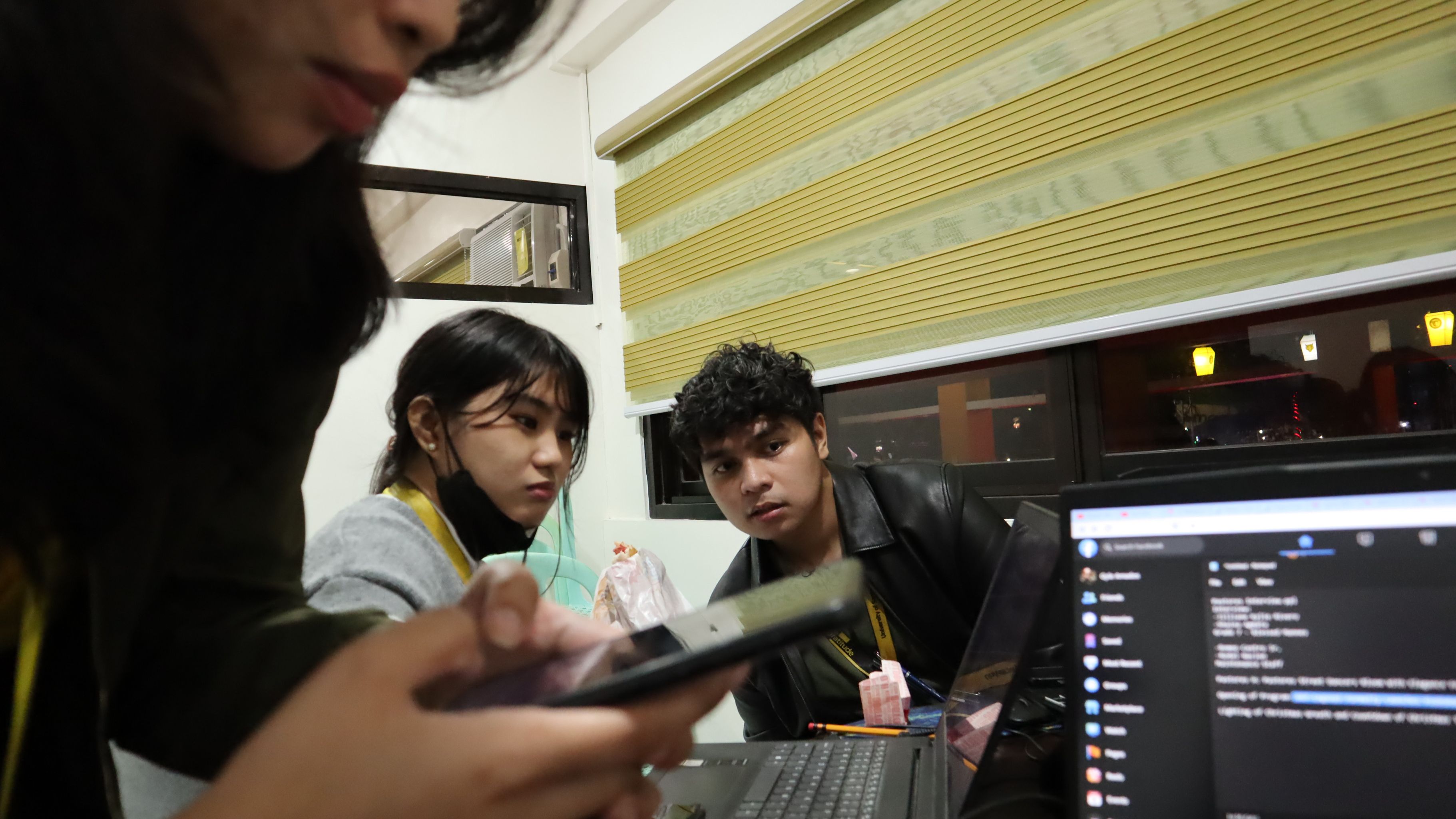In the hallowed halls of academia, where the scent of coffee mingles with the inevitable fragrance of procrastination, there exists a breed of warriors armed not with swords, but with pens and notepads. Yes, you guessed it – the campus journalists. As I embarked on this ink-stained odyssey, little did I know that my journey would involve more plot twists than a Shakespearean tragedy and more caffeine than a small coffee shop could supply reasonably.
JOURNALISM: A BEACON THROUGH THE STORM
Amidst a storm that turned my home into a waterlogged maze, my first taste of journalism wasn't in a newsroom but on a radio. Stranded on a floating sofa, wrapped in fear, I clung to the radio's relentless voice — a man’s voice unfazed by the chaos, delivering crucial information with the steadiness of a lighthouse in a tempest. As the water rose, so did my fascination. I was then moved to our floating dining table, I listened intently while my parents battled the elements. Their worried glances told me it was time to seek higher ground.
My dad carried me through howling winds and pitch black flooded alleys to a relative's sturdier home. Amidst the other children and elders seeking refuge, I found solace in a familiar sound – another radio. Despite my fear, the voice on air became a beacon of information and reassurance. The storm's passing brought relief, echoed in the broadcaster's voice, a collective exhale filling the room as gratitude for safety united us.
It was on September 25, 2006 when Typhoon Milenyo, a category 4 typhoon, entered the Philippine Area of Responsibility. It made landfall over the eastern coast of Northern Samar on September 27, 2006. Later on, it would reach Albay on the midnight of the 27th, raging through the province until the morning of the 28th.
Weeks later, another nightmare would loom through the land of Bicolandia, Typhoon Reming.
I was only five years old when it all happened. I was confused, yet I still remember everything that happened as if it was yesterday. Since that moment, journalism transformed into a beacon of hope during every storm that swept through our province. Whether through the crackling waves of a radio or the flickering images on a television screen, the assurance that someone was out there, observing, listening, and providing real-time information to everyone, became a source of solace for me.
TESTING THE WATERS OF CAMPUS JOURNALISM
Zooming ahead to high school, years after that unforgettable night, I decided to dip my toes into the pool of campus journalism. Oddly enough, I began my journey not with a pen, but with a pencil as an artist. Despite my secret writing talents, I found the allure of drawing too expressive to resist. In 8th grade, I found myself doodling my way into an editorial cartooning competition in Naga City. It wasn't just a battle of sketches; it was a chance to mingle with Bicol's artistic minds and absorb inspiration like a sponge. Art was my gateway drug to journalism, and cartoons were my expressive handshake.
High school was also the era of my internet escapades. From awkward vlogs of school shenanigans to me becoming the business manager for MediaTech, the UST-Legazpi digitals team. Yes, I wore the hat of their videographer too. Here I was able to learn that the camera is mightier than the pen... until you run out of battery.
Then came my first Divisional Schools Press Conference (DSPC), where fate dubbed me the technical operator for the radio broadcasting team. Miraculously, we traversed the airwaves all the way to the regional level in Naga City. Here I realized that radio broadcasting isn't just about buttons and dials; it's about orchestrating a symphony of voices and sounds.
Radio magic is 50 percent tech savvy, 50 percent crossing your fingers and hoping for good reception.
Little did I know that my journey from sketching cartoons to manipulating sound effects would be the whimsical prelude to my larger-than-life adventure in campus journalism.
Through these escapades, I discovered that journalism isn't just about ink-stained pages; it's a spectrum where art, tech, and storytelling collide, creating a colorful mosaic of experiences that go beyond the black and white of newsprint.
A CAMPUS JOURNALIST’S COLLEGE COMEDY
In the chaotic realm of college, my initial plan was to avoid all extracurricular chaos, especially the school publication. High school had gifted me enough journalism adrenaline, or so I thought. Lo and behold, fate chuckled as I found myself not only in the UST-Legazpi Dance Troupe but also playing a role in the college student council as the AD HOC Chairman. Amid the haze of dance practice and council responsibilities, the universe decided I needed another challenge – an invitation to join the Aquinian Herald, our student publication. Because, you know, sleep is overrated.
Cue the fifth cup of afternoon coffee, a desperate attempt to stay afloat amidst the whirlwind of responsibilities and the relentless dance troupe training until the wee hours. On the bright side, the late nights and endless activities meant losing weight – a fitness plan I hadn't signed up for but embraced nonetheless. Eventually, I bid farewell to the dance troupe and redirected my focus to the student council and the publication.
Once again, the call of journalism beckoned, leading me to the Regional Tertiary Schools Press Conference (RTSPC) in Daet, Camarines Norte. This time, I stepped into the spotlight as the anchor for the broadcasting team and even dared to grace the Mr. RTSPC stage. Miraculously, I bagged the Mr. RTSPC 2020 title while our broadcasting dreams sank due to a lack of proper training. Yet, the camaraderie we shared became the real victory. Here, I realized that triumph isn't always about the medals; sometimes, it's about the bonds forged in the crucible of shared challenges.
Enter the COVID-19 pandemic era, and our team pivoted to the digital realm. Despite the restrictions, we published a newsletter and a literary folio. My journey escalated when I was thrust into the role of news editor during the transition. As the pandemic haze cleared, I ascended to the coveted position of Editor-in-Chief for the Aquinian Herald. Described as "approachable" and possessing the mystical ability to "bring people together" by the outgoing EIC, I found myself immersed in the publication's multifaceted world – from art to digitals to the written word.
Turns out, the whirlwind was just the precursor to a storm of journalistic learning and leadership.
A CAMPUS JOURNALIST’S LAST SPILLED INK
As the curtain falls on this wild journalistic carnival, I find myself at the intersection of chaos and creativity, armed with a pen, a cup of coffee, and a collection of misadventures that would make even Shakespeare reconsider his plot twists.
From stormy childhood nights to caffeine-fueled college chaos, this journey has been more riveting than a Netflix binge on a rainy day.
I've learned that being an Editor-in-Chief is a bit like teaching a cat to dance – unpredictable, occasionally messy, but surprisingly entertaining. We went back to square one, but hey, at least we found the right square. Yet, through the spilled ink and “missed-takes,” we emerged not just as journalists but as a community.
In the grand tapestry of campus journalism, I've learned that life, much like a well-crafted article, is a mix of chaos and coherence. The dance between deadlines and dance routines, the delicate balancing act of being an artist, student council member, and eventually an Editor-in-Chief, was a comedy of errors – a script with a plot twist around every corner.
And so, dear reader, as you close this chapter and step into the unwritten pages of your own story, remember this: Life is a first draft, and laughter is the best editorial decision you can make. So, twirl into the next act, spill a little ink, and let the dance of words continue. After all, the best stories are the ones that leave us with a smirk, a twirl, and the anticipation of what comes next.
Here's to spilled ink, to laughter in the face of perfection, and to the beautifully messy, gloriously imperfect journey that defines our story.





